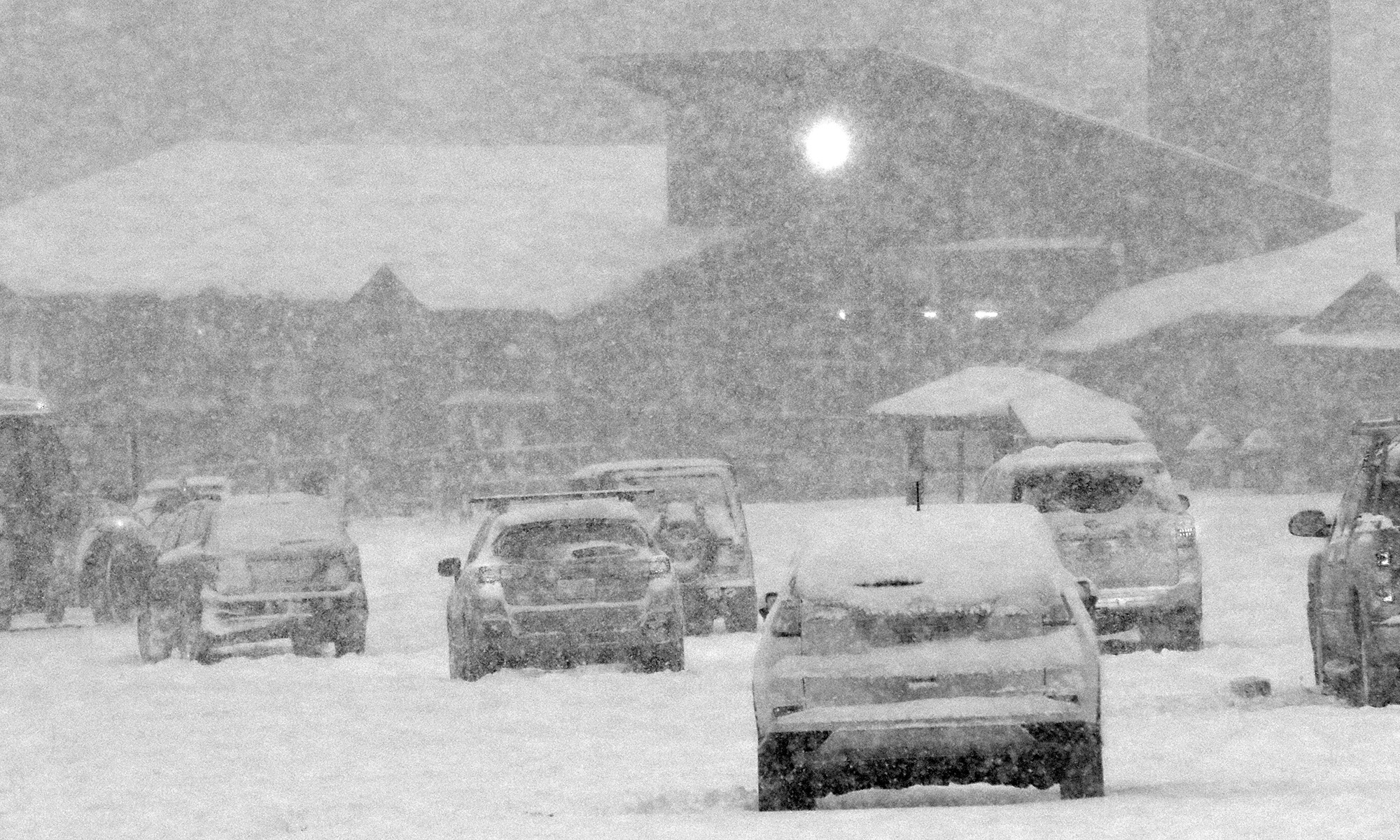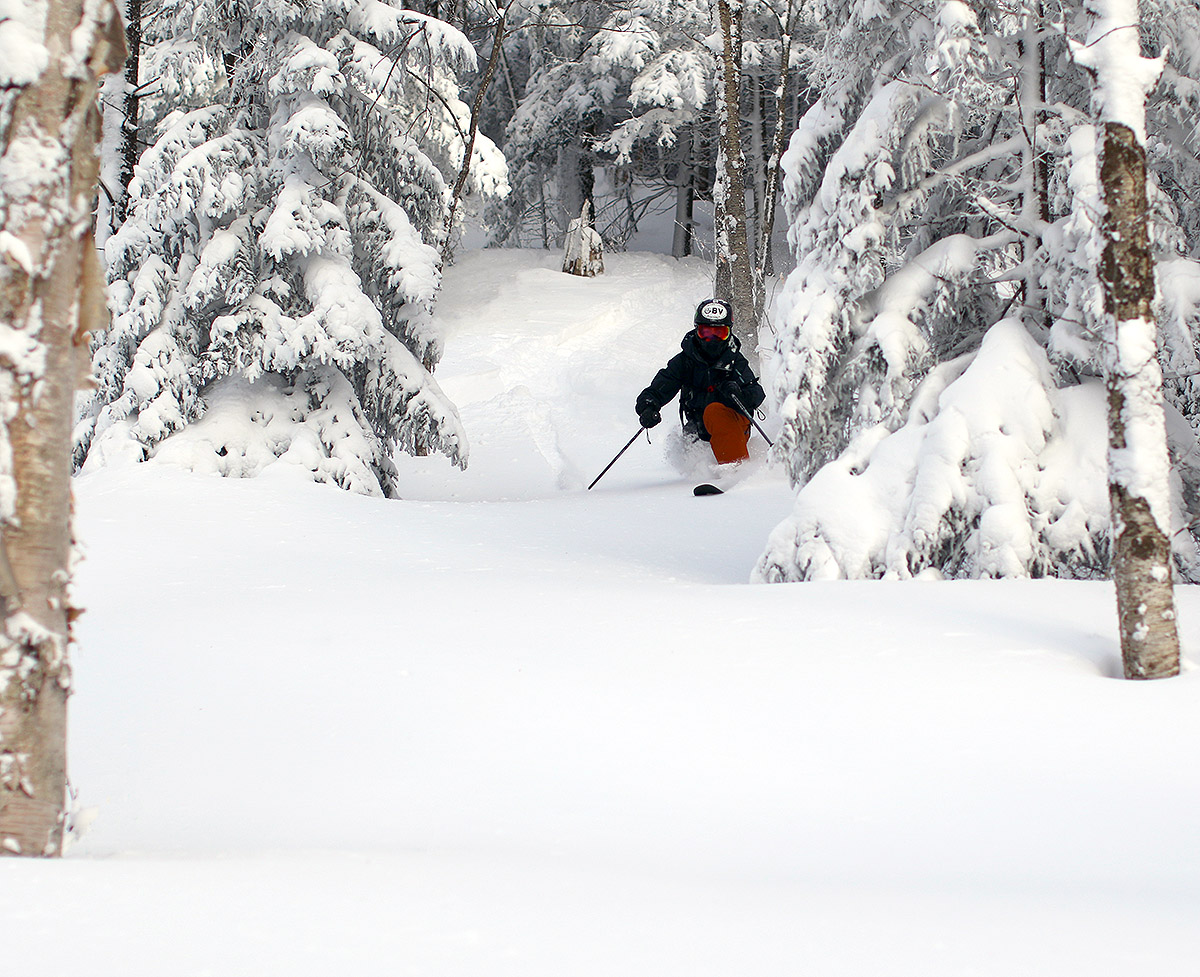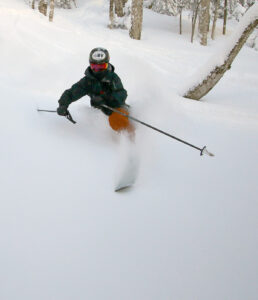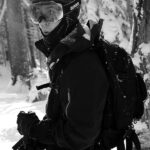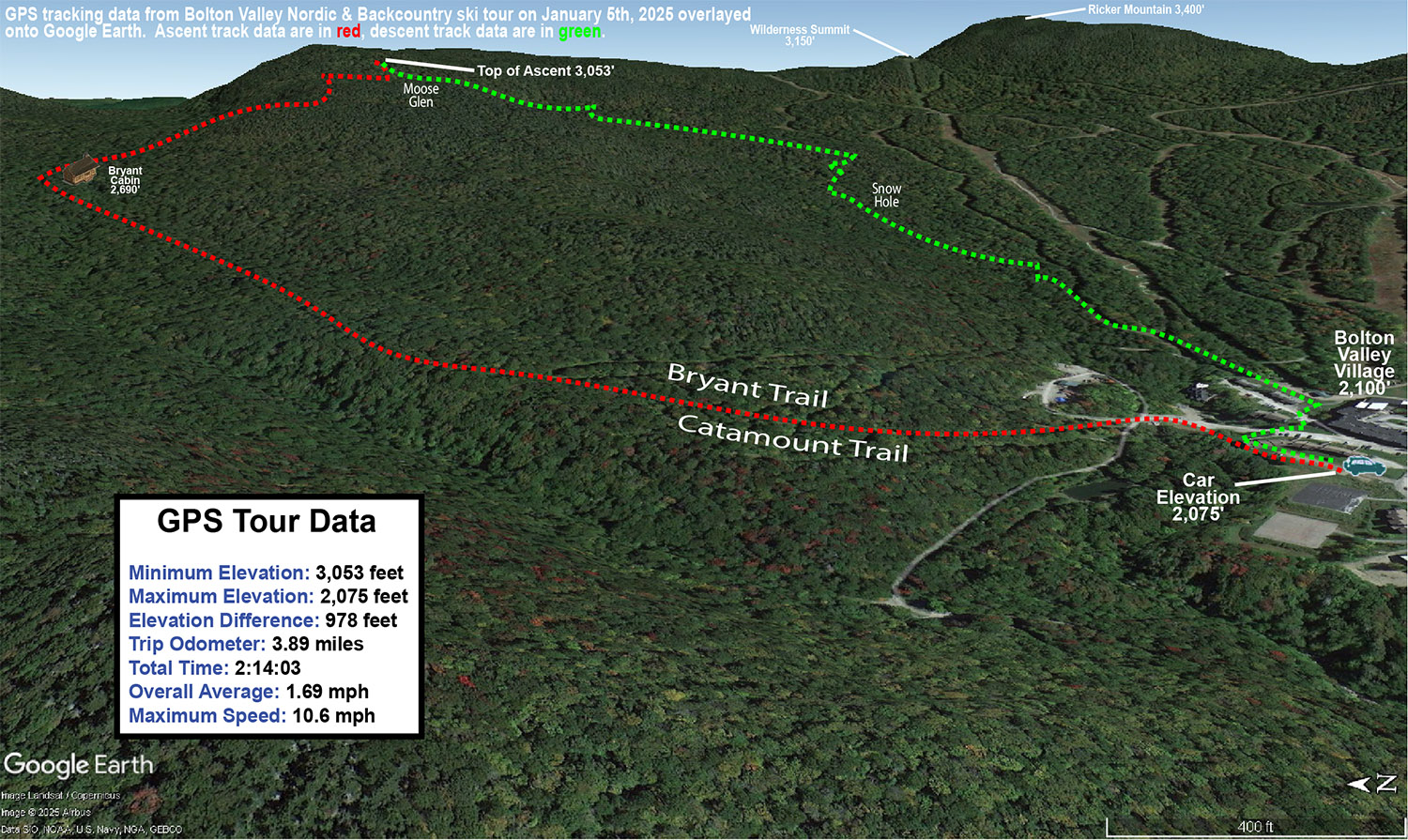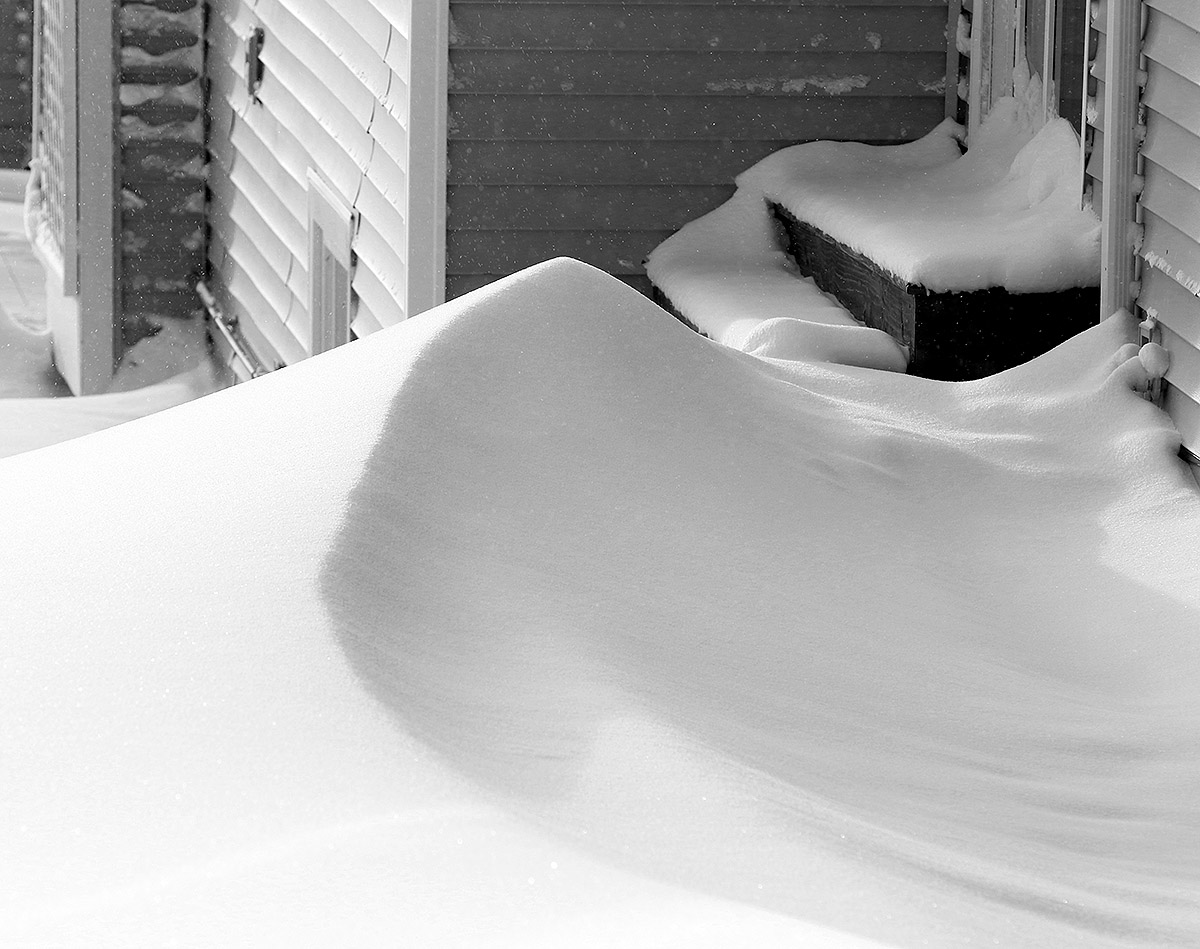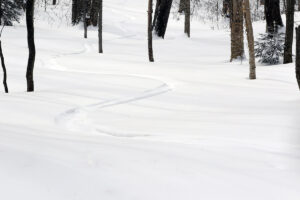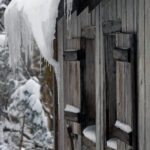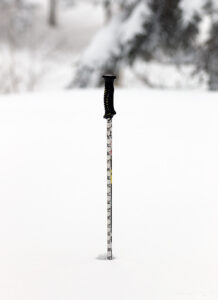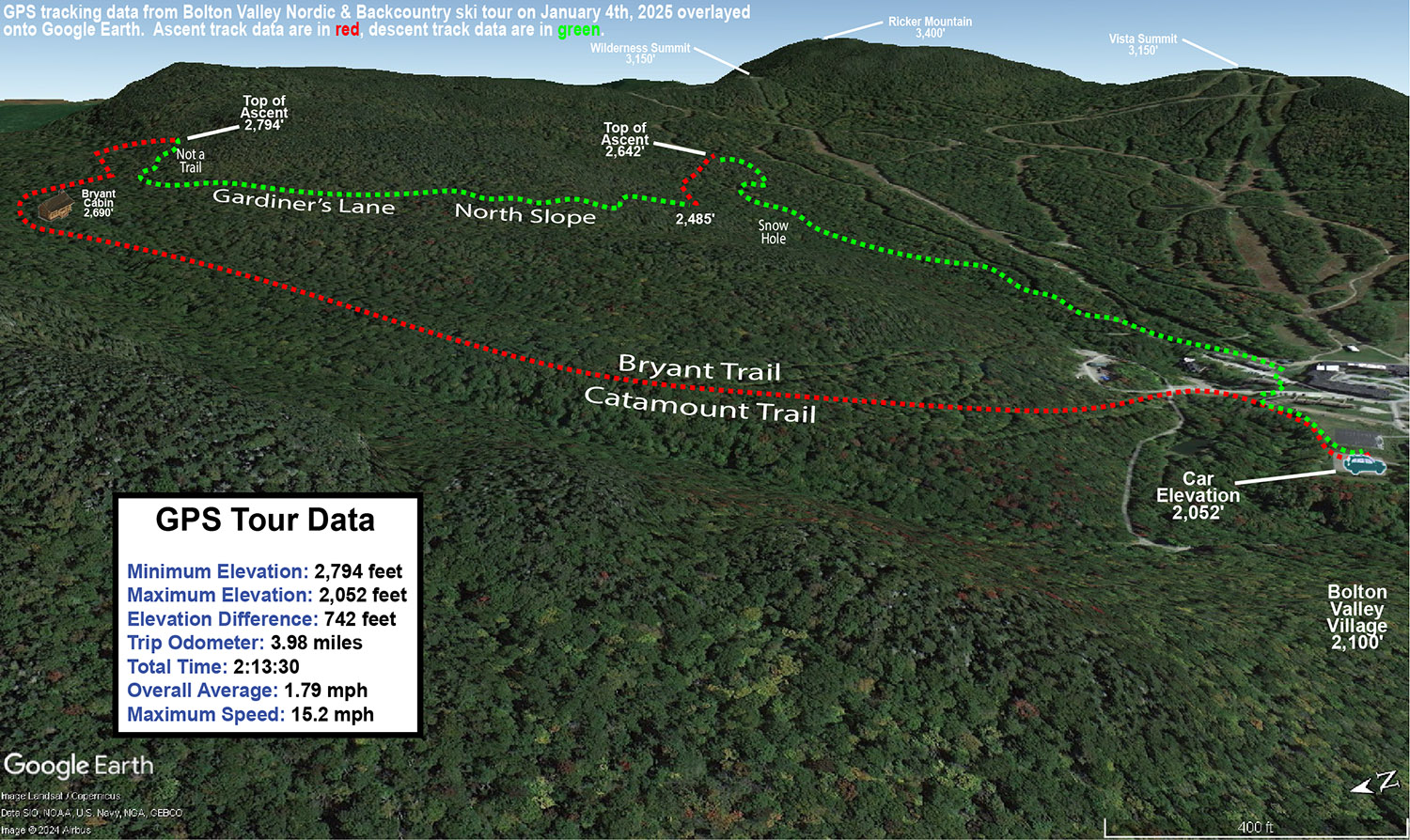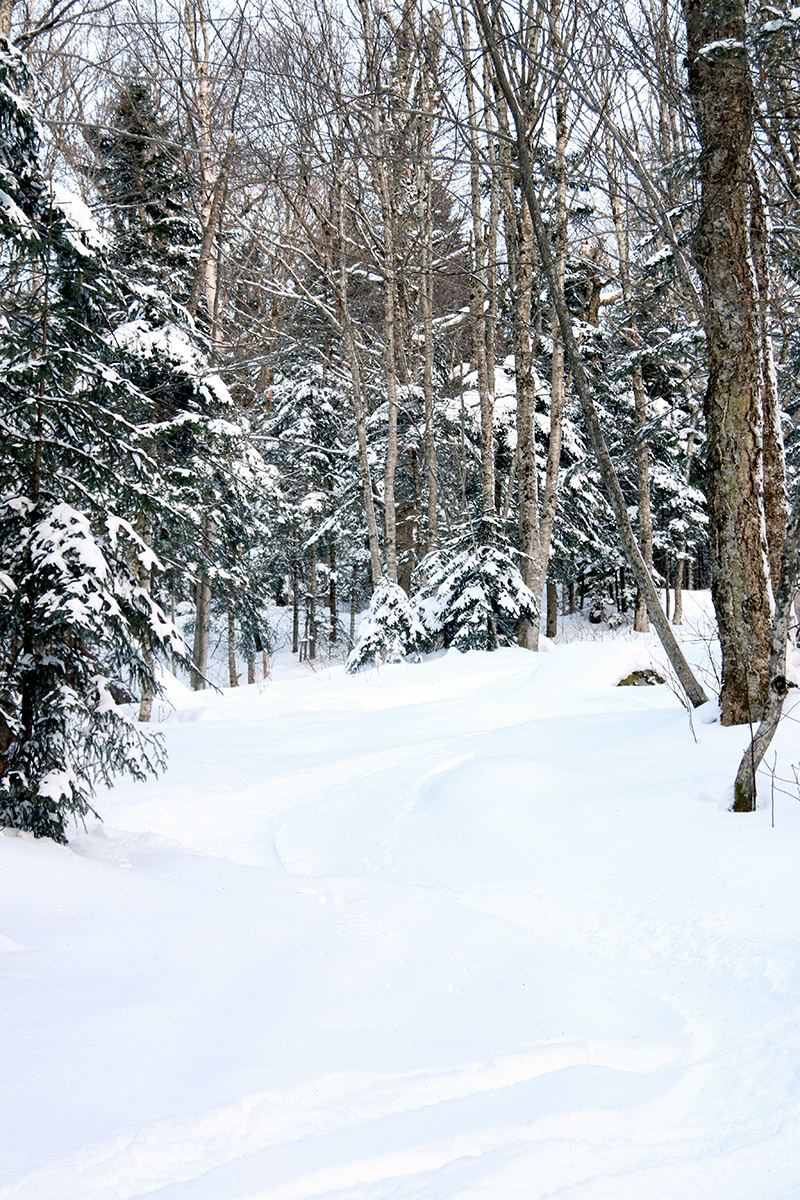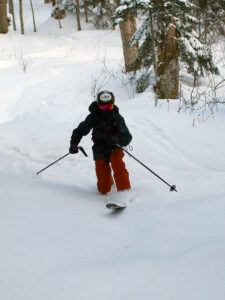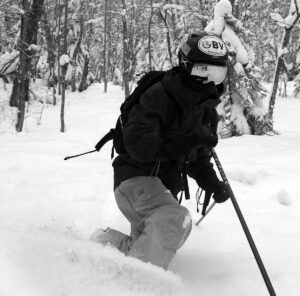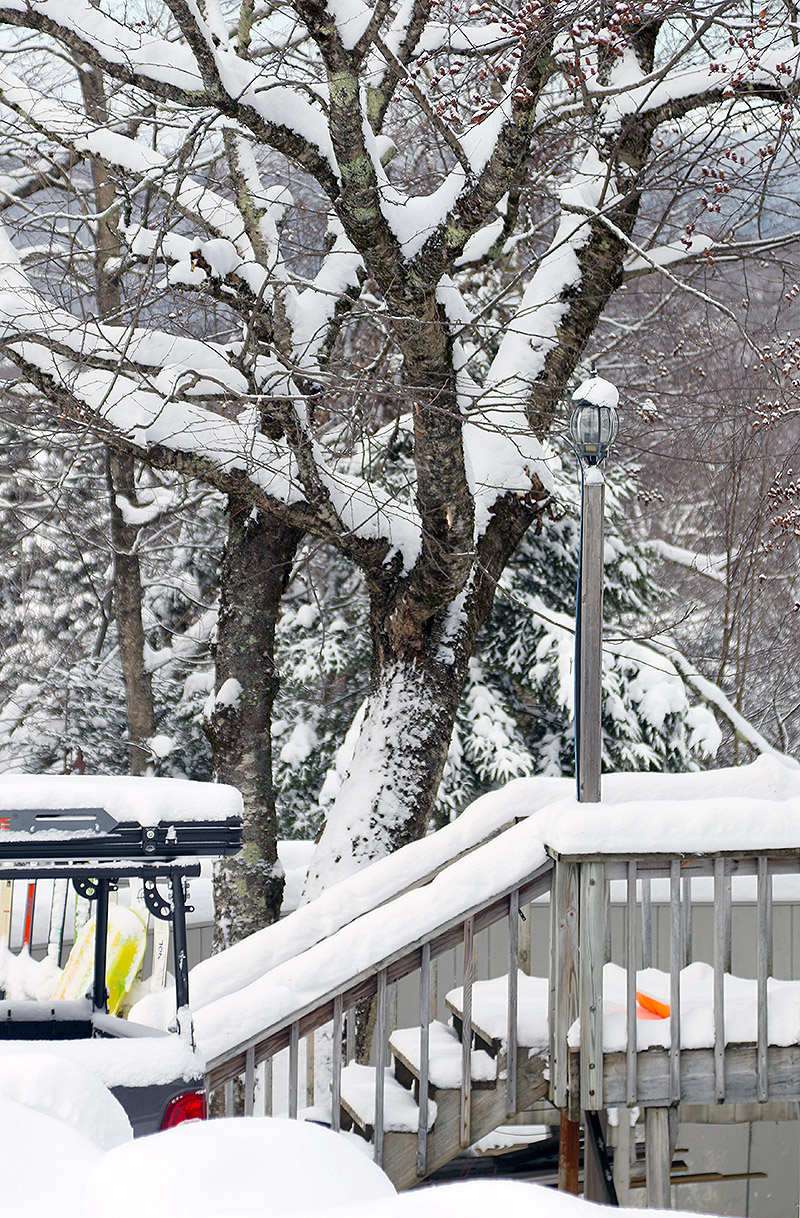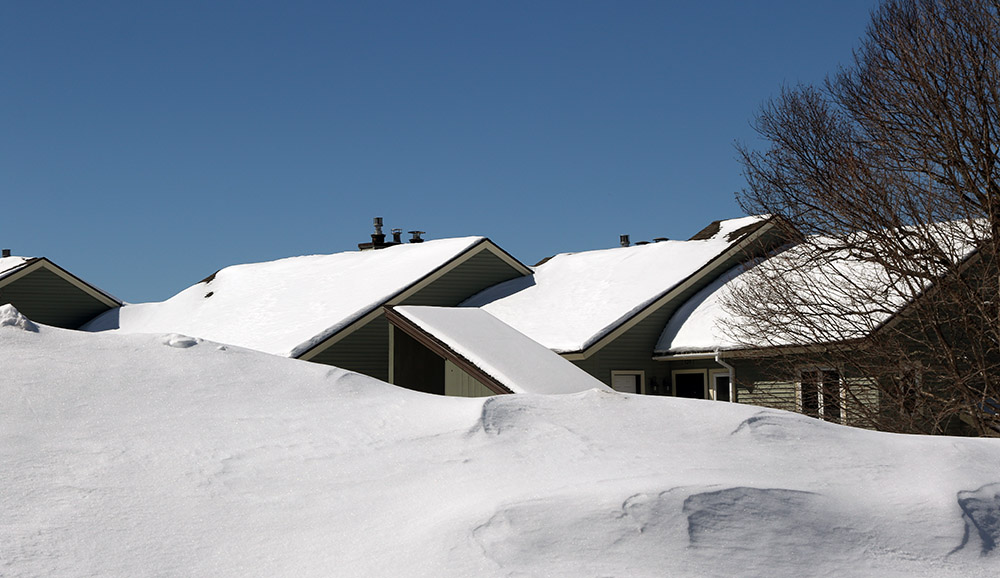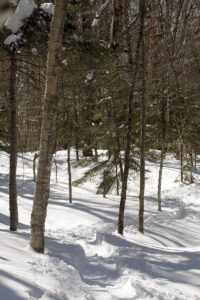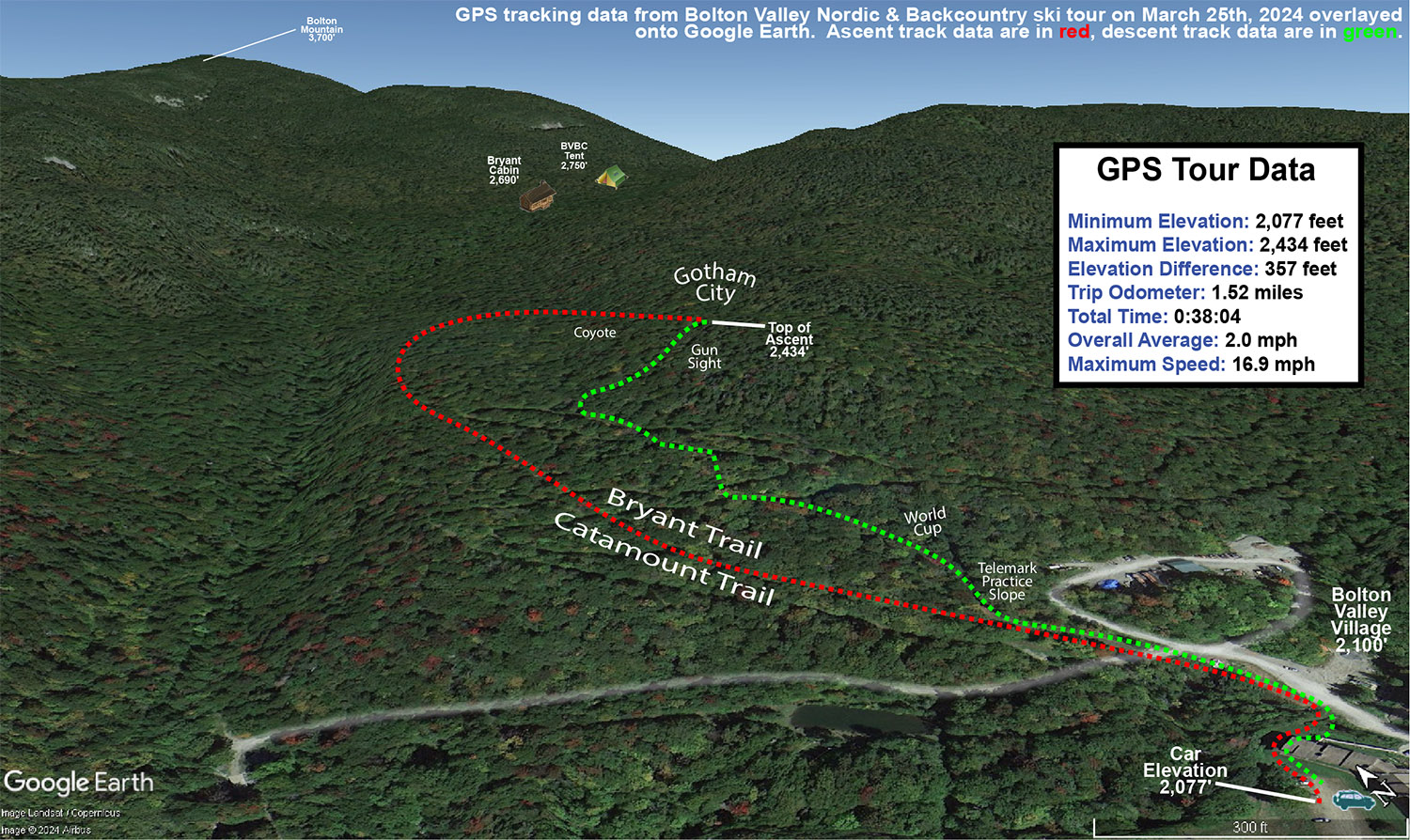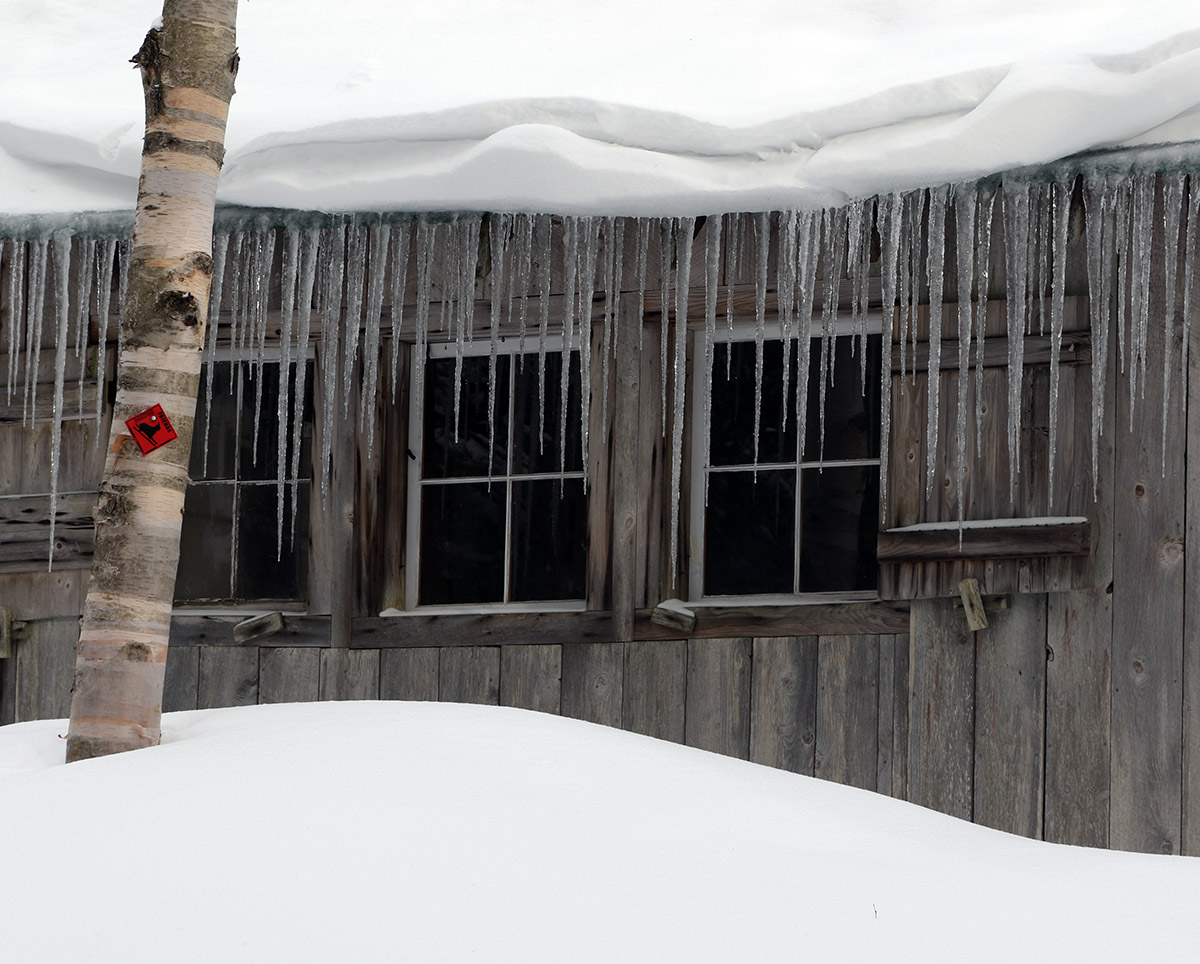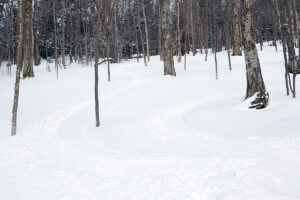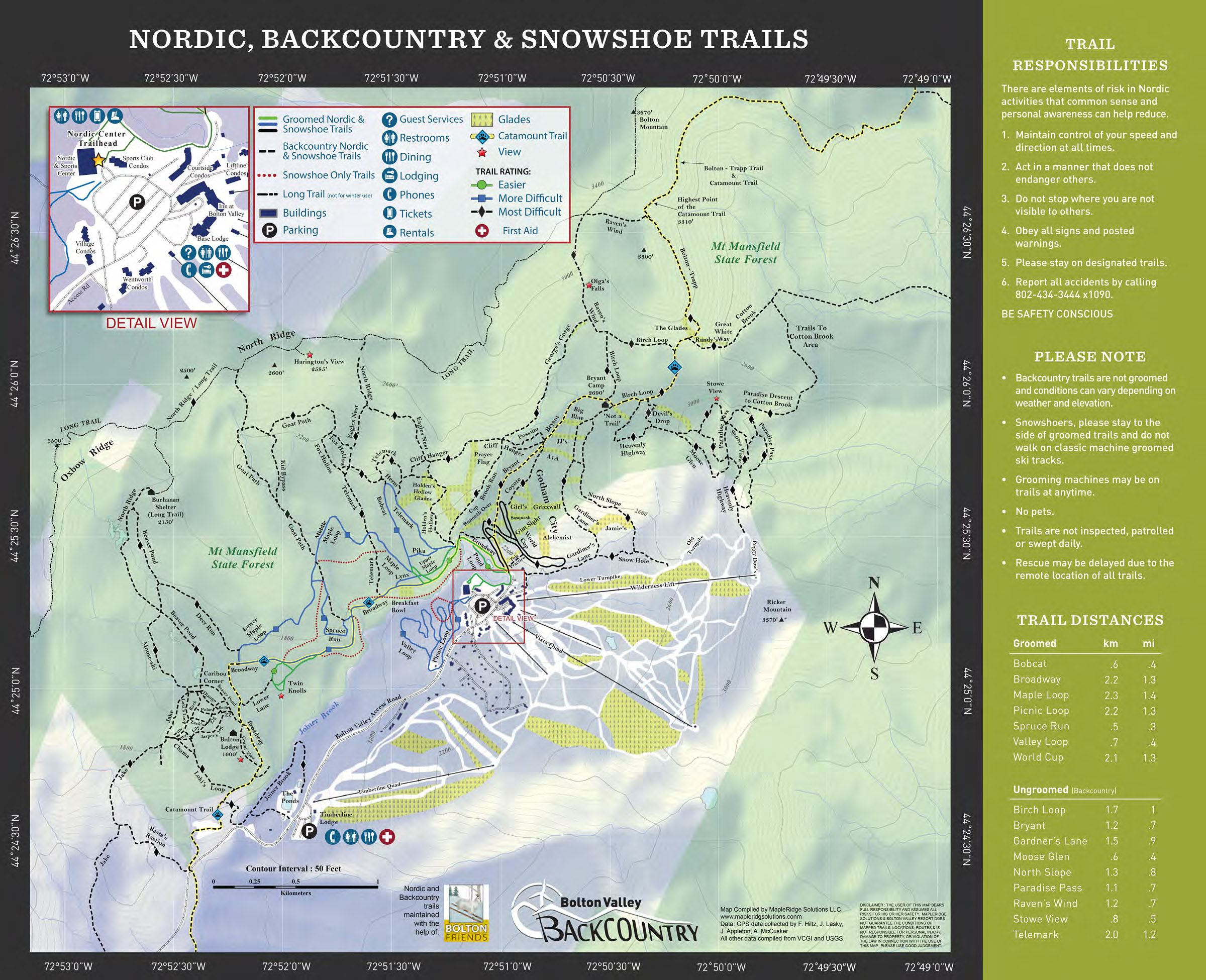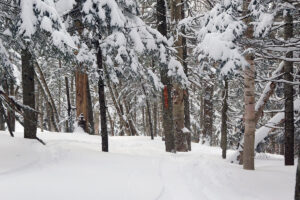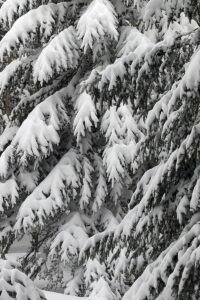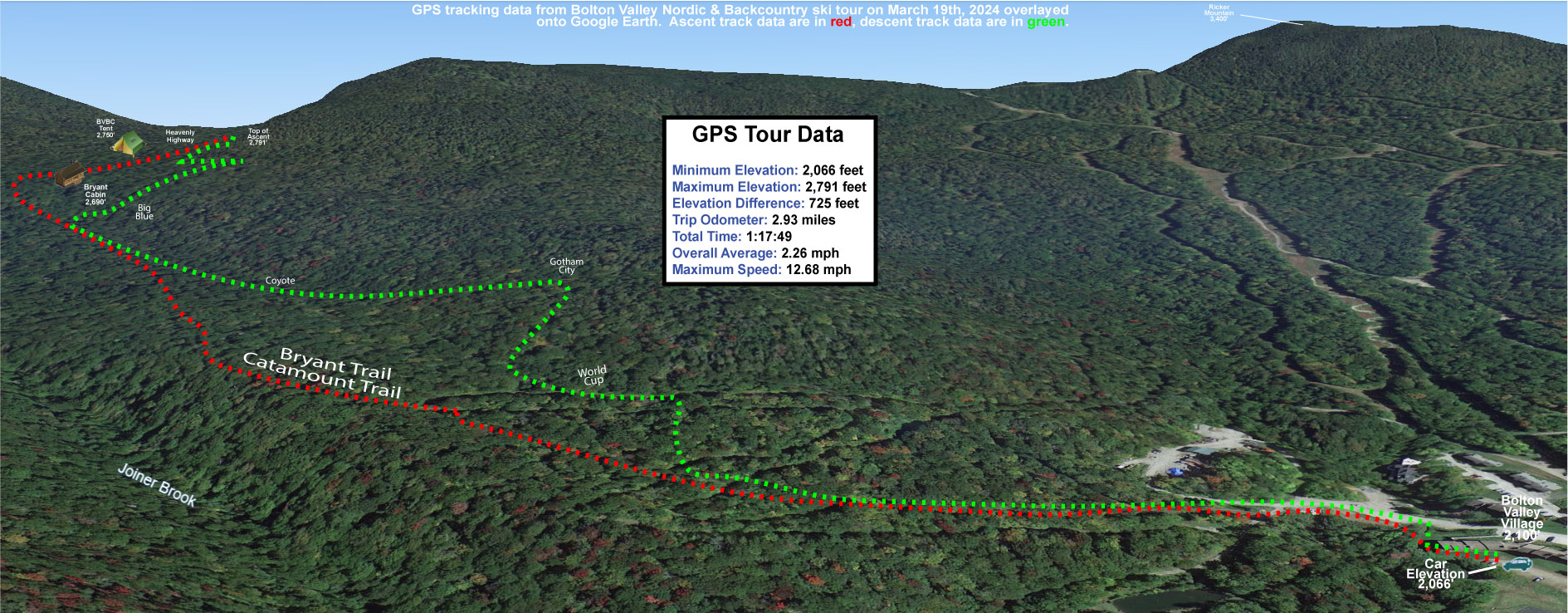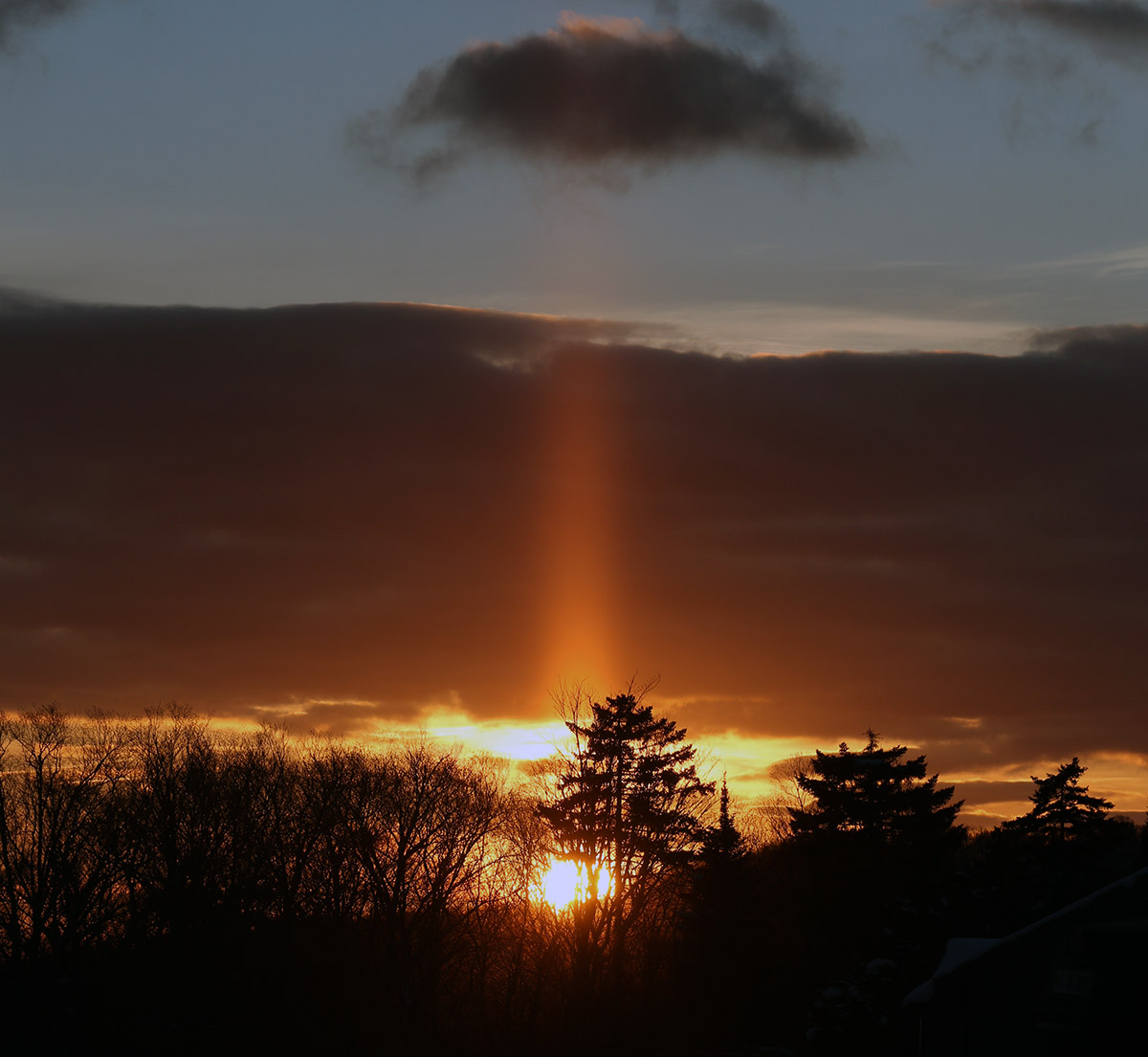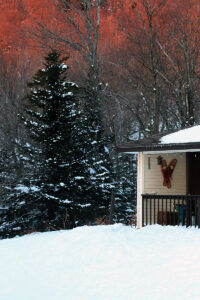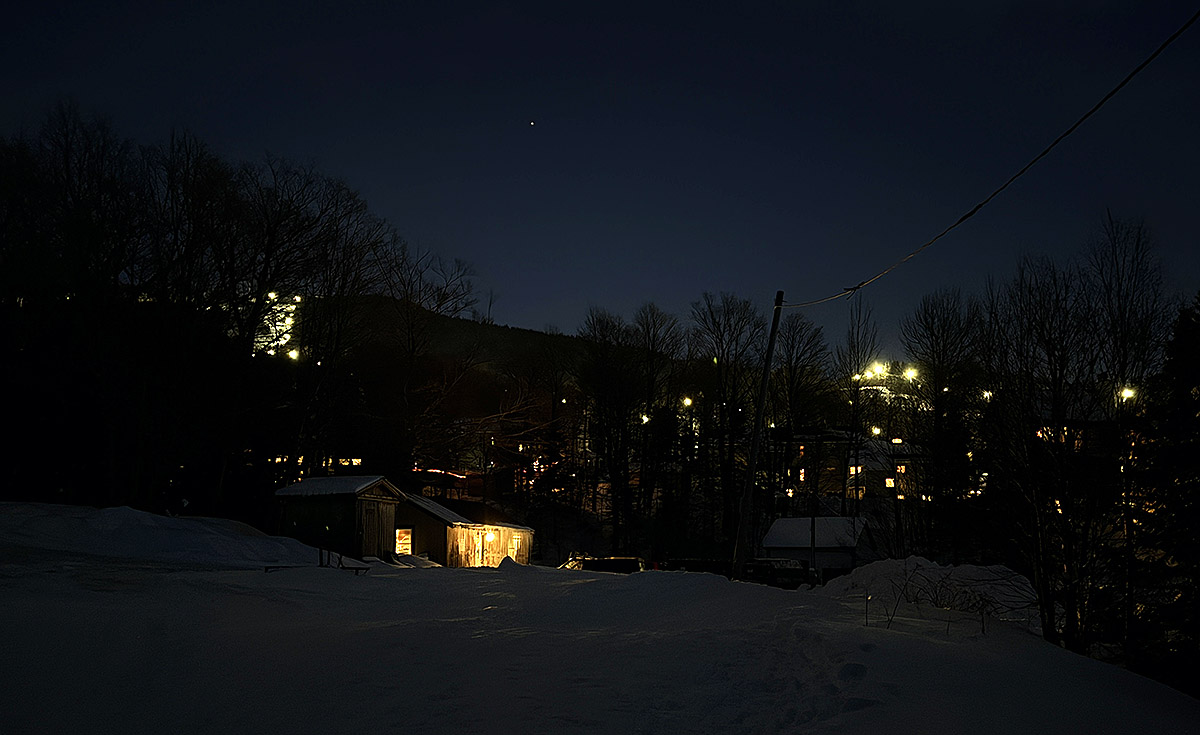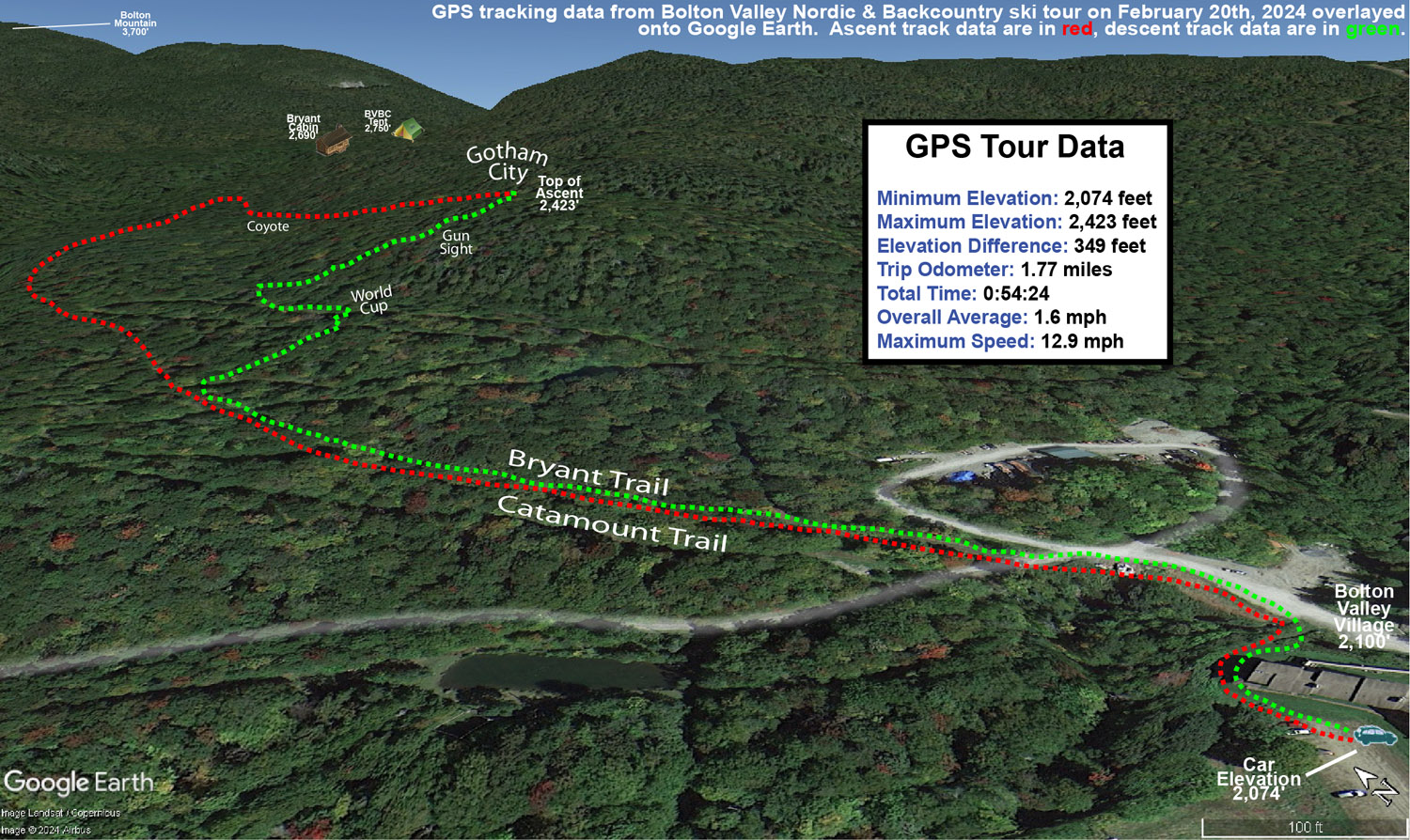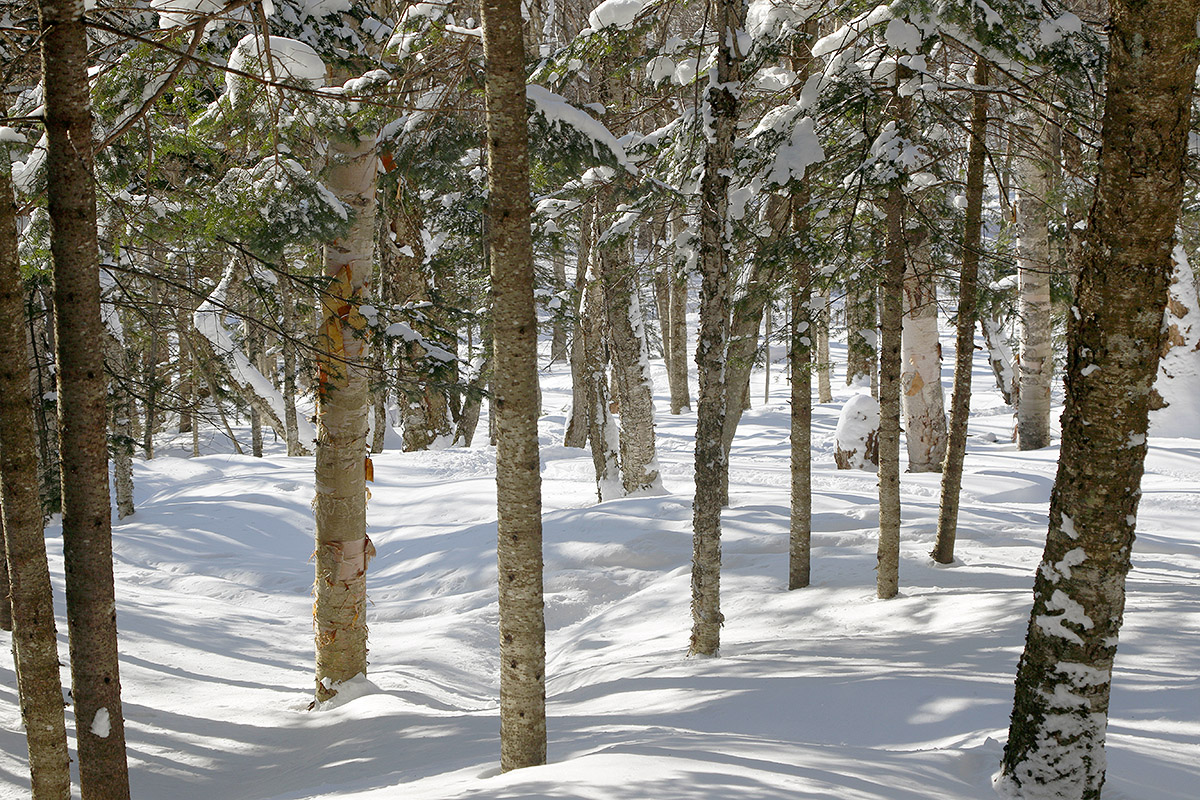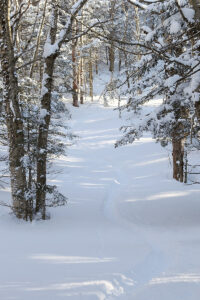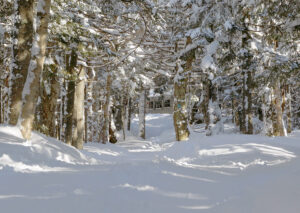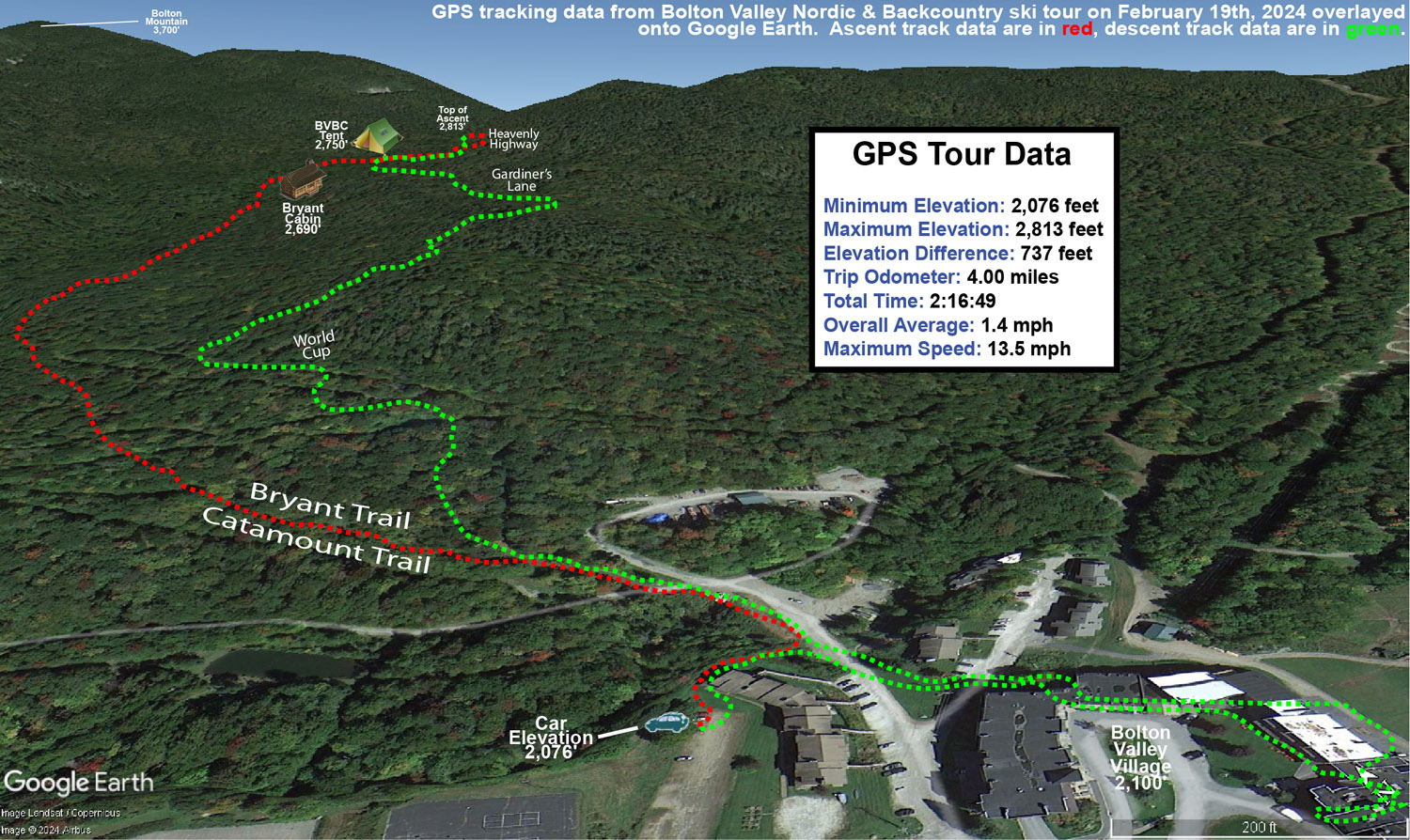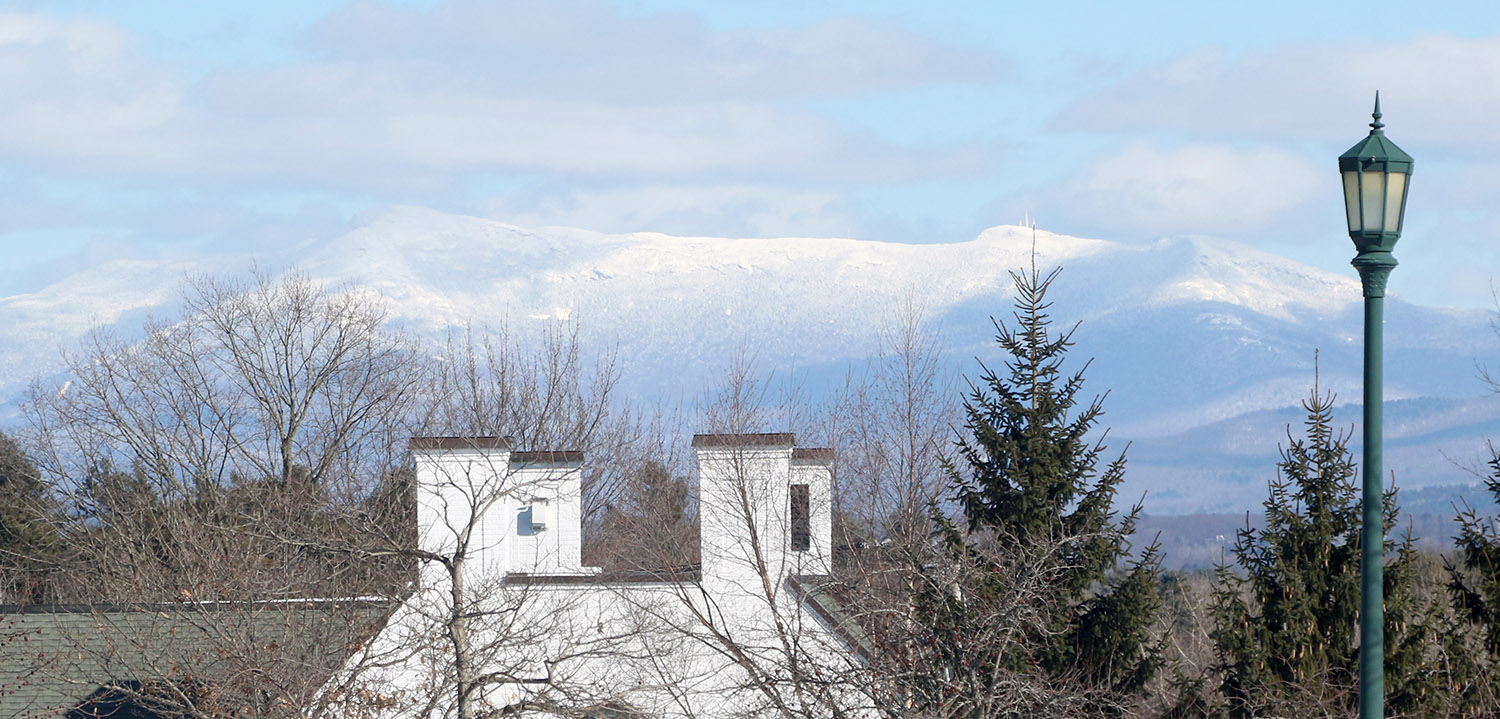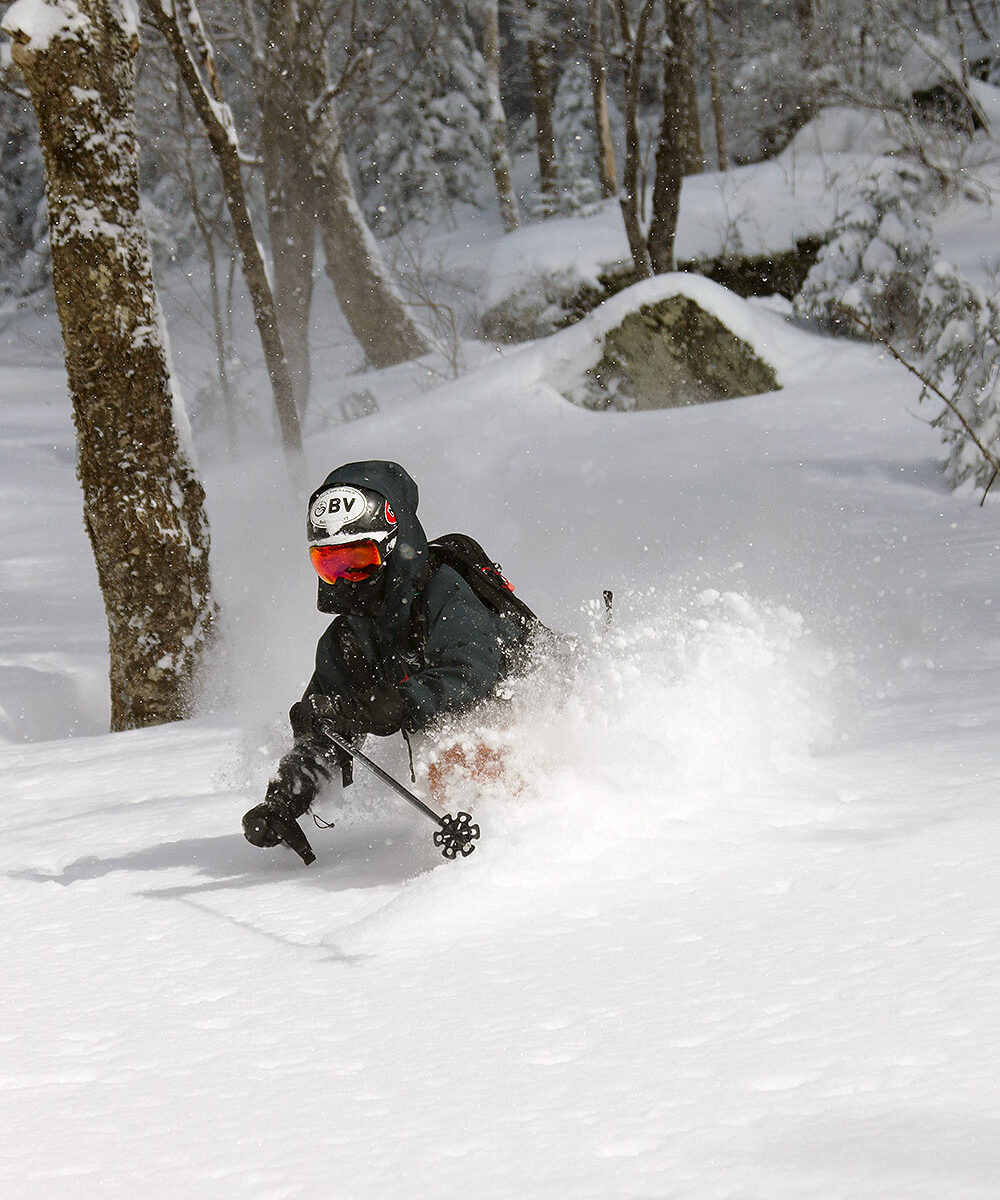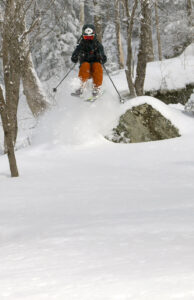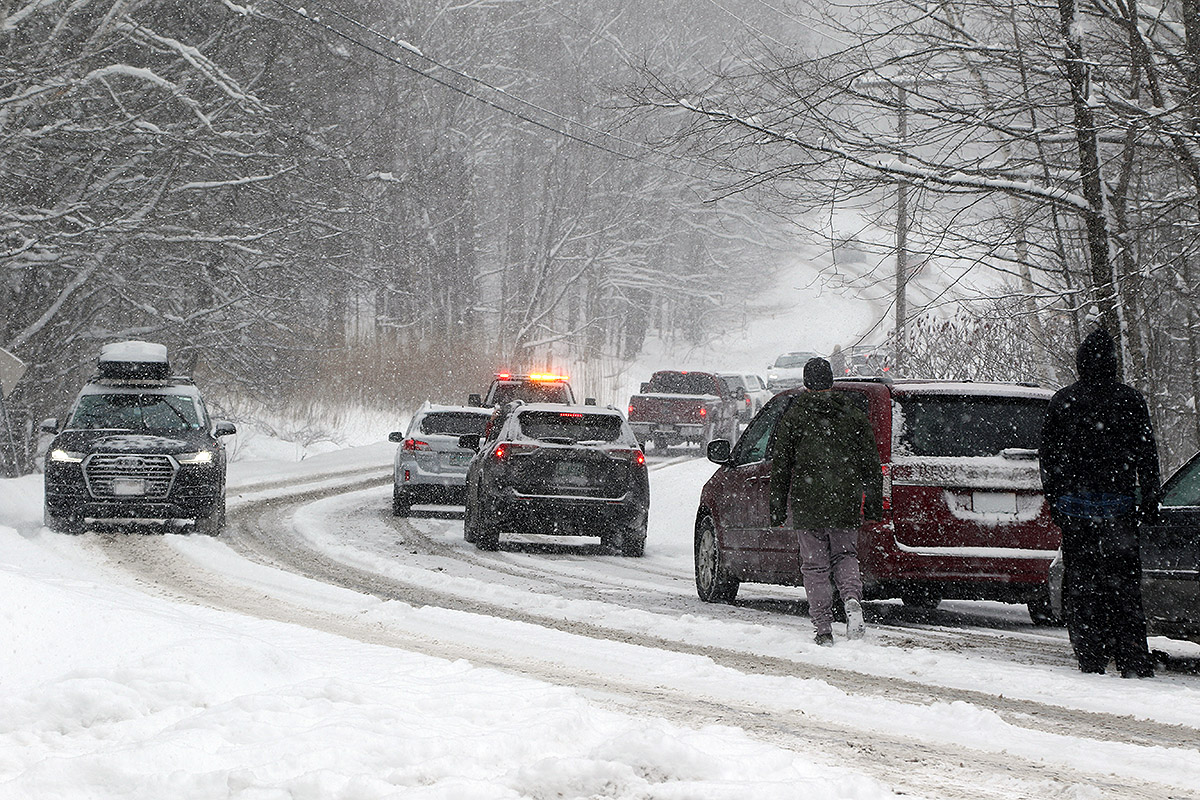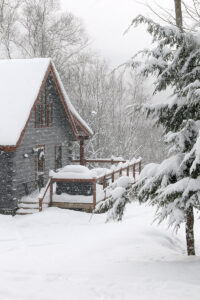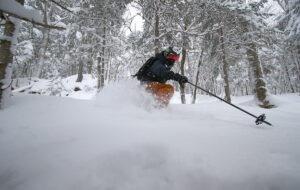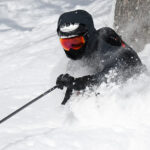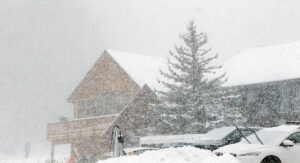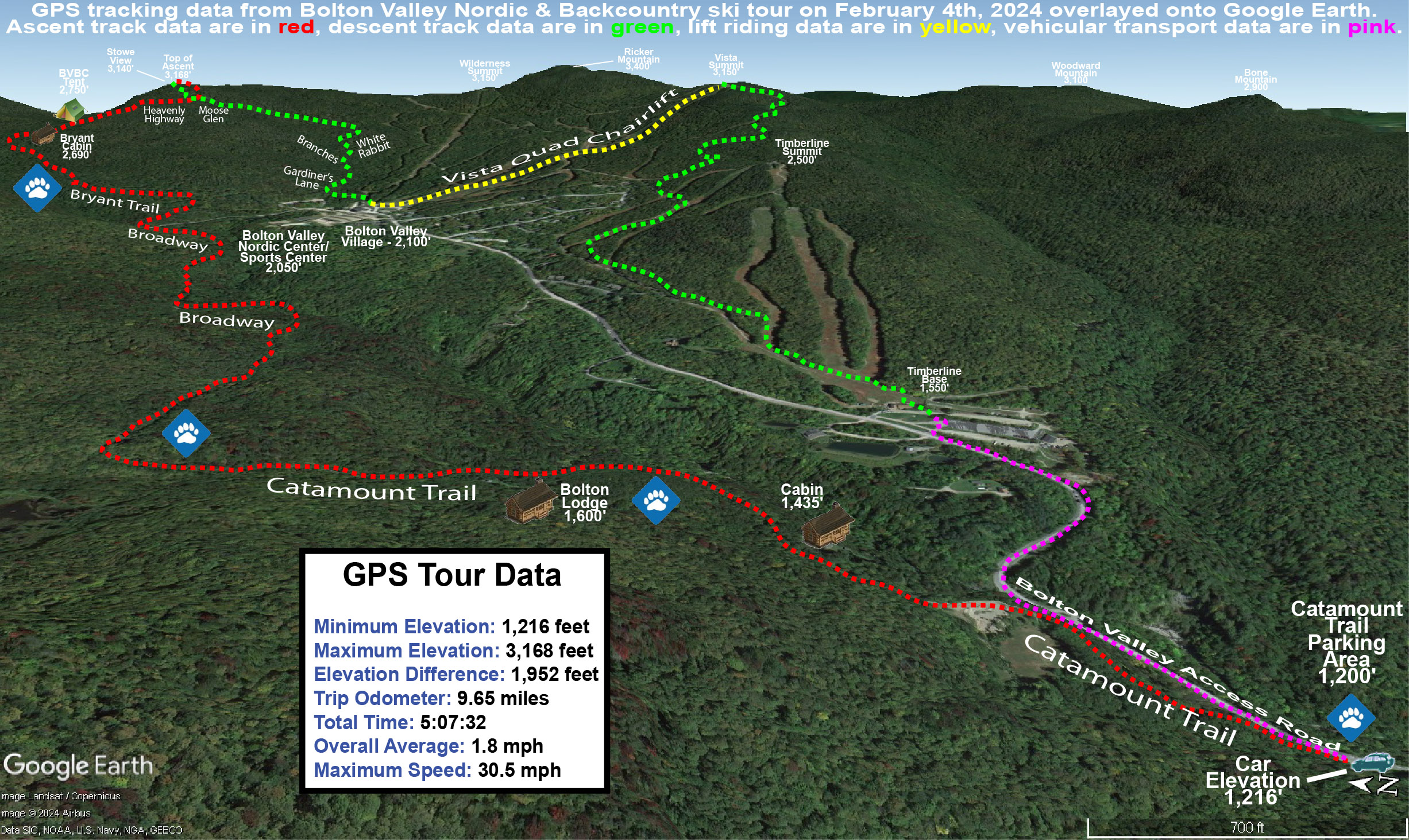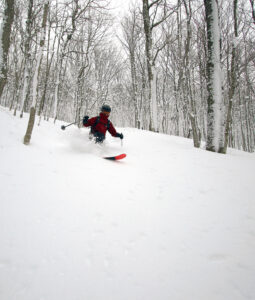
A couple weeks back there was some great discussion in the Northern New England thread at the American Weather Forums about the Jay Peak backcountry conditions in areas like Gilpin Mountain and Domey’s Dome, so I was certainly looking to head up to that part of the Northern Greens for some touring when the opportunity arose. Prodigious amounts of snow have simply continued to fall through much of this past week, with Jay Peak now at 200 inches of snowfall on the season. So, the powder has been staying fresh and the snowpack just keeps getting deeper. I was thinking of heading up for a tour in the Gilpin/Domey’s area this weekend, and out of the blue, Dylan called to see if I’d bring him and some of his college friends on a backcountry ski tour since some of their passes were in blackout mode due to the holiday weekend. I told him where I was already thinking on touring, and that’s all it took – the plan was in place to head out Saturday morning.
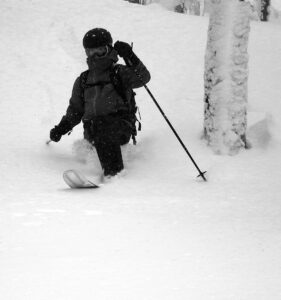
The forecast for the day was looking great – temperatures in the upper 20s F are perfect because it’s warm enough to be quite comfortable out in the backcountry, but below the freezing mark to avoid any temperature effects on the powder. I was concerned about parking since it’s a holiday weekend, but there were plenty of parking spots up at Jay Pass on Route 242. I arrived about 20 minutes before Dylan and his friends, so I poked around at the pass, and checked out the snow conditions and trail access points until they arrived.
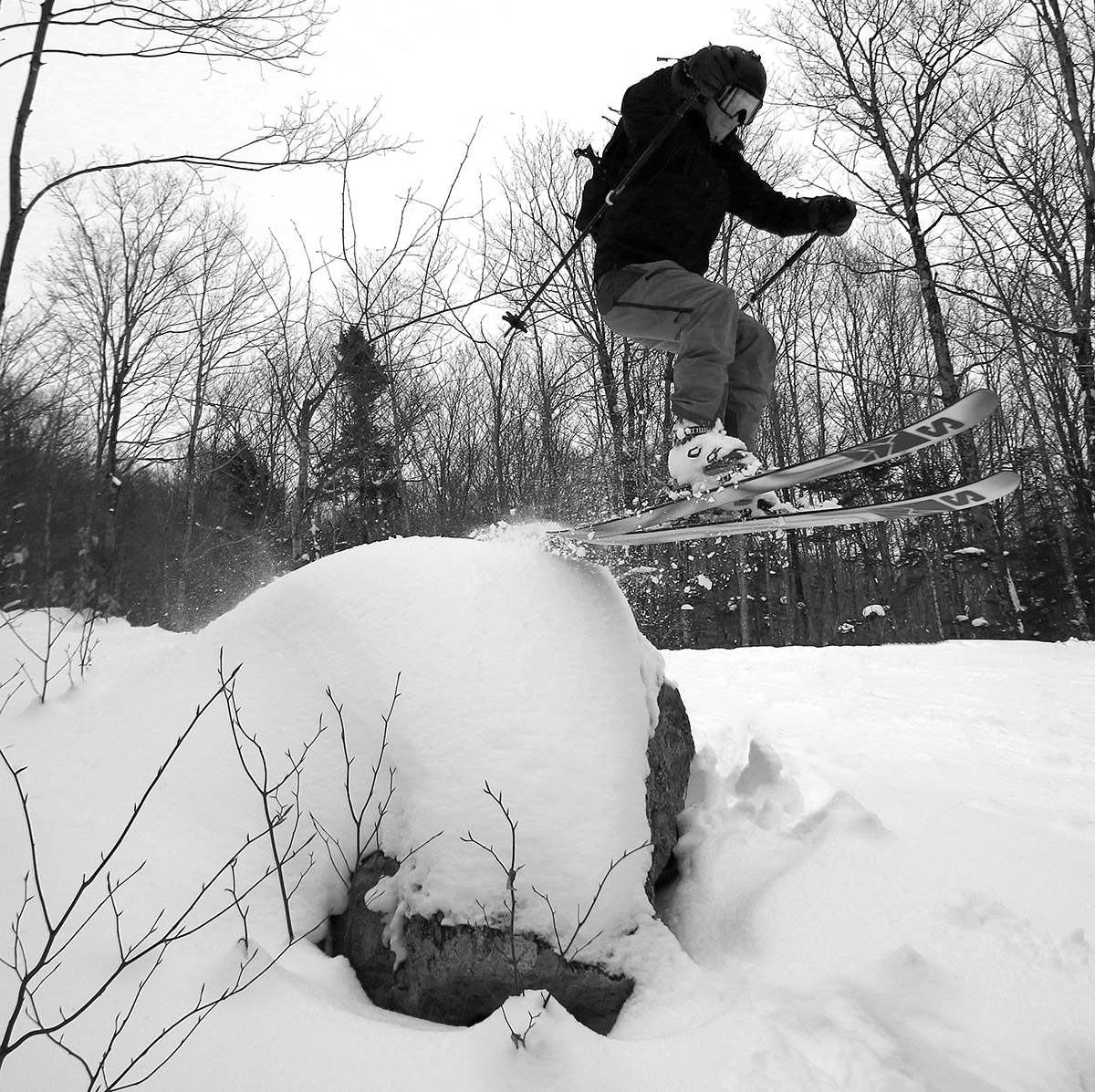
I’ve skied the terrain north of the pass on Gilpin Mountain before, but this time I wanted to check out the terrain to the south. My plan for our tour was to use the Long Trail to head up Gilpin Mountain and out along the ridgeline toward Domey’s Dome, then descend the west face of the range and catch the Catamount Trail for the return trip. With regard to ski touring, that side of the range is, in theory, set up beautifully – the Long Trail follows the ridgeline, and the Catamount Trail roughly parallels it down in the valley near Route 242. So, you can head out on the Long Trail to whatever point you want, then drop in for a descent and use the Catamount Trail as a collector for returning to Jay Pass. I say it’s a great setup “in theory”, with the caveat that the Long Trail can be tough to follow at this time of year. The Long Trail uses white blazes on the trees to mark its route for hikers, and the trees up along the ridgeline there can be absolutely loaded with snow. So, following the trail can be quite challenging if someone hasn’t already put a track in place. Also, as the snowpack continues to rise, the blazes can be more and more difficult to find. As of now, the blazes are at about waist level, so they’re still visible if you can find them behind the inches of snow caked to the trees, but even at the current height they are getting hard to see. One could certainly head out to an ascent of Domey’s Dome using the Catamount Trail from below, but after traversing the Catamount Trail in that area for the return on our tour (there are plenty of undulations and meanderings), that approach feels like more work than it needs to be unless you park farther down on Route 242.
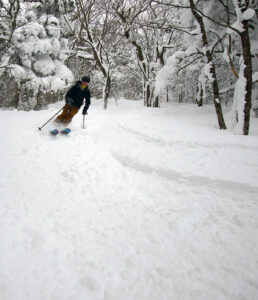
While it was breezy in the open area of Jay Pass, with the anemometers at the weather station area buzzing right along, the wind disappeared as soon as we entered the forest on our ascent. Following the Long Trail upward from the pass to Gilpin Mountain was fairly easy – it was well set as a skin track from plenty of skier traffic, so even without being able to see the blazes, it’s simple to follow. Once we were up at the Gilpin Mountain ridgeline, we took a quick jaunt to the north to check out the official summit of Gilpin Mountain at 3,021’ then moved southward and reached the South Peak of Gilpin Mountain, which is slightly lower at 2,993’. From there, we headed south on the Long Trail toward Domey’s Dome. We ran into a couple of guys from Quebec (based on their accents) who were setting up to descend a steep, sweet looking gully on the back side of the range. They joked with us about not stealing it from them, but we would never have done that, and we had other plans anyway. After that, we didn’t run into anyone, because skier traffic seems very light once you get past the general Gilpin Mountain area. We were able to follow the Long Trail southward for a little while, with the help of one track from a previous skier, but as we descended into the col between Gilpin and Domey’s, it became more and more difficult to hold the ridgeline and not get pulled into descending on one side of the ridge of the other. Nobody had broken trail on the Long Trail across the ridgeline, so the route finding took time. We had access to multiple GPS units, and when the Long Trail is obscured with deep snow like it is now, you certainly want to have your GPS and compass. Not wanting to waste too much of the session trying to navigate the traverse, we eventually decided to hug the western side of the ridge as we headed southward, with the intention of beginning a descent if we saw some appealing ski terrain. It wasn’t too long before we found a relatively steep line that dropped through some open trees, and we decided it was as good a time as any to begin skiing.
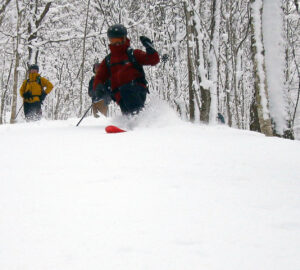
Our descent from the col between Gilpin and Domey’s featured some nice areas with reasonably open trees, spots with excellent natural glades, and some terrain that had been logged and maintained for logging access. The powder was fantastic – there was typically 1 to 2 feet of bottomless powder over a deep base. I would frequently check the depth of the snowpack, and my ski pole would go below the surface of the snow, which means the snowpack depth was in excess of 45 inches. The powder was in a very nice right-side-up density gradient starting with snow in roughly the 6 to 8% H2O range on top. The only thing that could have really made the powder better would have been to throw on several more inches of fresh 3-6% H2O champagne, but that’s really getting picky, because it skied incredibly well. Everyone was on fat skis with widths over 100 mm, and the skis were definitely in their element out there today. Dylan was on his Telemark skis for the first time in 2 or 3 seasons because he’s been looking for a good pair of boots to replace the current ones that are too tight, but it didn’t look like his Telemark skiing had missed a beat. I was happy to see that, and so were his friends.
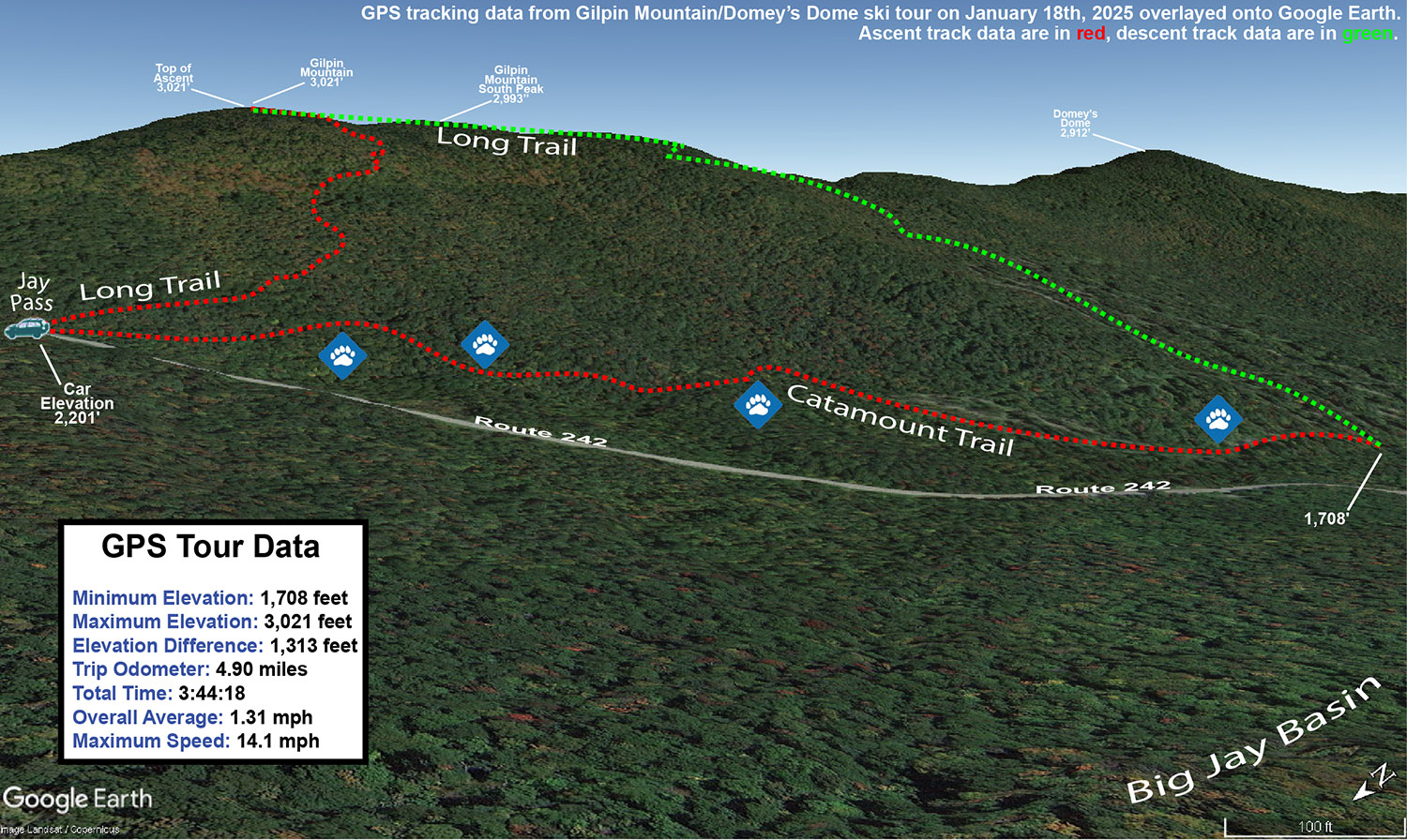
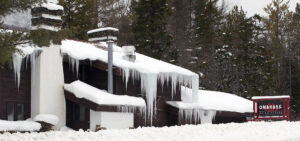
As of this morning, Jay Peak is reporting 203 inches of snowfall on the season, and you can really feel it when you’re out there in the nearby backcountry. The snowpack depth at the Mt. Mansfield Stake at 3,700’ is around 55 inches, but based on what I found out there on our tour in the Gilpin/Domey’s area, that snowpack depth is probably obtained at a lower elevation in the Jay Peak area. We weren’t even out in the Big Jay Basin area, which seems to collect some of the most snow in the area due to its leeward position, so I bet the snowpack is quite deep out there. Dylan and his friends are planning to head out to Alyeska in March for some skiing during spring break, and he mentioned that as of now they apparently have the most snowfall for the season of any ski area in the U.S. at 346 inches. That got me wondering about how things are going for some of the well-known, snowier resorts in western North America with respect to snowfall, and I saw that Steamboat is at 143 inches, Whistler Blackcomb is at 197 inches, Grand Targhee is at 211 inches, and Alta is at 233 inches. So, Jay Peak’s 203 inches is certainly in that ballpark, and the area’s snowpack is definitely doing well. I’d say what’s really helped with making Jay Peak’s snowfall perform in terms of building the snowpack is that they haven’t had to deal with many thaws, especially in the past few weeks when they’ve has so much continuous snowfall.
